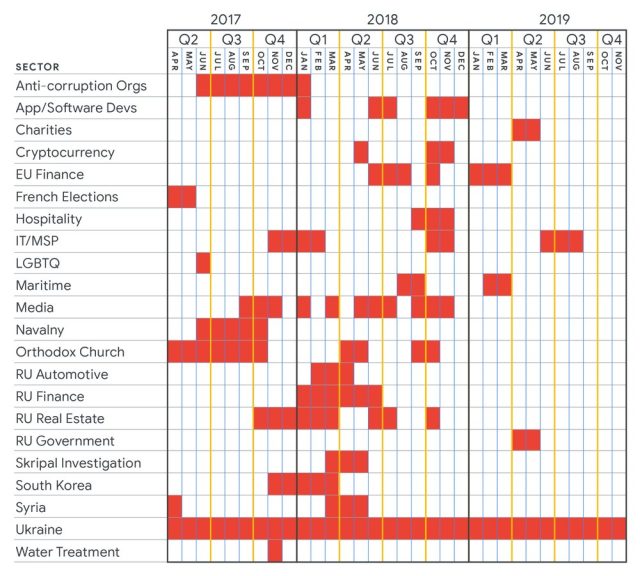Primer: Secretary of State, Mike Pompeo is correct, China is using the same fake/false propaganda tactics well known and exploited for decades by Russia’s FSB. Further, while Beijing refuses to allow foreign (read U.S.) scientists into the Wuhan Laboratory for review/investigation, Beijing is also refusing WHO scientists as well.
***
FNC: A research dossier compiled by the so-called “Five Eyes” intelligence alliance states that China intentionally hid or destroyed evidence of the coronavirus outbreak, resulting in the loss of tens of thousands of lives around the world.
The 15-page document from the intelligence agencies of the U.S., Canada, the U.K., Australia and New Zealand, was obtained by Australia’s Daily Telegraph newspaper and states that China’s secrecy amounted to an “assault on international transparency.”
The dossier touches on themes that have been discussed in media reports about the outbreak of the virus, including initial denial that the virus could be transmitted between humans, the silencing or “disappearing” of doctors who tried to speak up, the destruction of evidence in laboratories and refusal to provide live samples to international scientists working on a vaccine.
Specifically, the file notes that China began censoring news of the virus on search engines beginning Dec. 31, deleting terms including “SARS variation, “Wuhan Seafood market” and “Wuhan Unknown Pneumonia.”
Three days later, on Jan. 3, China’s National Health Commission, ordered virus samples to be either moved to designated testing facilities or destroyed, while simultaneously enforcing a “no-publication order” related to the disease.
Perhaps most damningly, the dossier states that Chinese authorities denied that the virus could be spread between humans until Jan. 20, “despite evidence of human-human transmission from early December.”
The dossier is similarly unsparing about the World Health Organization (WHO), stating that it toed the Chinese line about human-to-human transmission despite the fact that”officials in Taiwan raised concerns as early as December 31, as did experts in Hong Kong on January 4.”
As of Friday night, the WHO’s official Twitter account still featured a tweet from Jan. 14 that stated: “Preliminary investigations conducted by the Chinese authorities have found no clear evidence of human-to-human transmission of the novel #coronavirus (2019-nCoV) identified in #Wuhan, #China.”
At the same time, the dossier states that throughout February, “Beijing [pressed] the US [sic], Italy, India, Australia, Southeast Asian neighbours and others not to protect themselves via travel restrictions, even as [China] imposes severe restrictions at home.”
At the same time, the file states: “Millions of people [left] Wuhan after the outbreak and before Beijing lock[ed] down the city on January 23.”
The dossier continues the litany of Chinese defensiveness, stating: “As EU [European Union] diplomats prepare a report on the pandemic, [China] successfully presses Brussels to strike language on [China] disinformation.”
Similarly, “As Australia calls for an independent inquiry into the pandemic, [China] threatens to cut off trade with Australia. [China] has likewise responded furiously to US [sic] calls for transparency.”
The Telegraph report does present one point of divergence between the allied governments, with Australia believing the virus most likely originated in the Wuhan wet market and putting the chances it accidentally leaked from a lab at “5 percent.”
By contrast, Fox News reported April 15 that U.S. intelligence officials are increasingly confident that coronavirus likely originated in a Wuhan lab as a consequence of China’s attempt to demonstrate that its efforts to identify and combat viruses are equal to or greater than the capabilities of the United States
President Trump said Thursday that he’s seen evidence suggesting the virus came from a lab after Fox News and others asked if he knew of anything that gave him confidence that the outbreak originated in the Wuhan Institute of Virology.
“Yes, I have,” he replied, “And, I think that the World Health Organization should be ashamed of themselves because they’re like the public relations agency for China.”
Multiple sources previously told Fox News that it is believed standards in Wuhan were disregarded before the virus leaked, prompting Beijing to initiate a cover-up. Sources also claimed the WHO was complicit from the beginning in helping China cover its tracks.
The WHO and China have denied any wrongdoing.
The Telegraph also reported that key figures at the Wuhan Institute of Virology previously worked or trained in Australian government labs where they conducted research on pathogens in live bats as part of an ongoing partnership with the Chinese Academy of Sciences.
According to the dossier, the team’s work at the Wuhan lab involved discovering samples of coronavirus within a cave in Yunnan province and synthesizing a bat-derived coronavirus that could not be cured.
***
KEY DATES IN COVID COVER-UP
November 9, 2015:
Wuhan Institute of Virology publish a study revealing they created a new virus in the lab from SARS-CoV.
December 6, 2019
Five days after a man linked to Wuhan’s seafood market presented pneumonia-like symptoms, his wife contracts it, suggesting human to human transmission.
December 27
China’s health authorities told a novel disease, then affecting some 180 patients, was caused by a new coronavirus.
December 26-30
Evidence of new virus emerges from Wuhan patient data.
December 31
Chinese internet authorities begin censoring terms from social media such as Wuhan Unknown Pneumonia.
January 1, 2020
Eight Wuhan doctors who warned about new virus are detained and condemned.
January 3
China’s top health authority issues a gag order.
January 5
Wuhan Municipal Health Commission stops releasing daily updates on new cases. Continues until January 18.
January 10
PRC official Wang Guangfa says outbreak “under control” and mostly a “mild condition”.
January 12
Professor Zhang Yongzhen’s lab in Shanghai is closed by authorities for “rectification”, one day after it shares genomic sequence data with the world for the first time.
January 14
PRC National Health Commission chief Ma Xiaowei privately warns colleagues the virus is likely to develop into a major public health event.
January 24
Officials in Beijing prevent the Wuhan Institute of Virology from sharing sample isolates with the University of Texas.
February 6
China’s internet watchdog tightens controls on social media platforms.
February 9
Citizen-journalist and local businessman Fang Bin disappears.
April 17
Wuhan belatedly raises its official fatalities by 1290.





